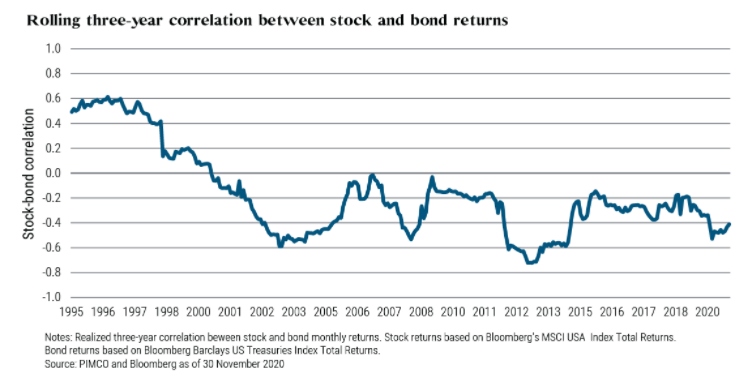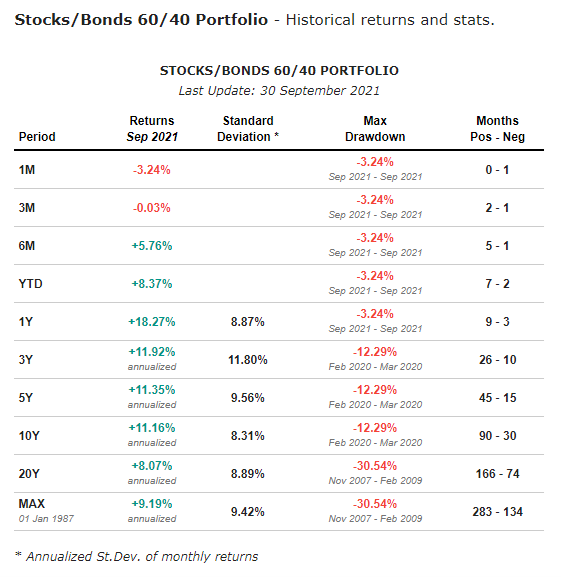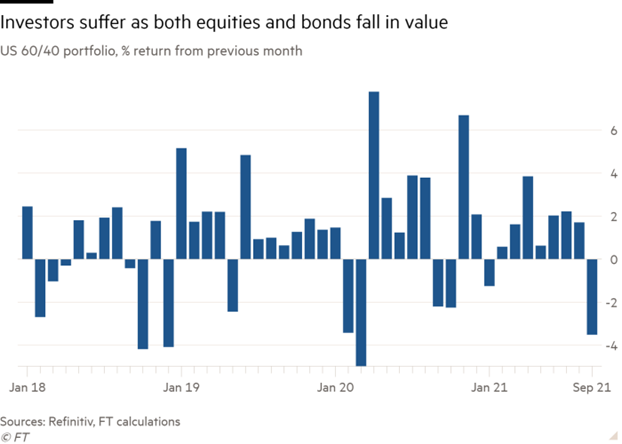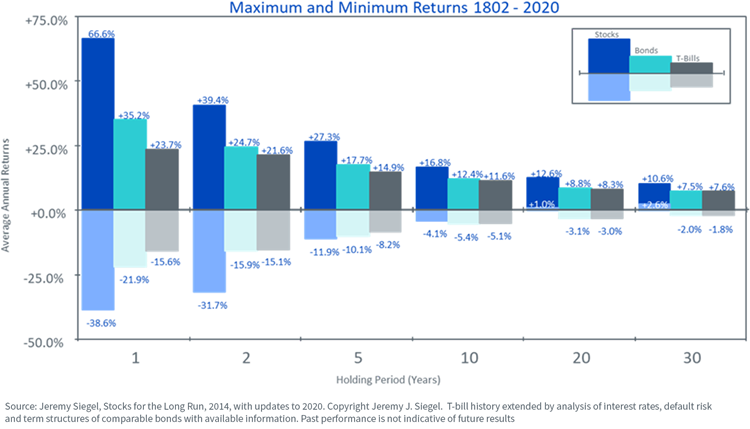While investing 60% in equities and 40% in bonds was a safe play for decades, this strategy has faced some obstacles in recent weeks. But should we forget decades of results or just hold steady and look through the noise? Are there ways to safeguard returns and beat inflation?
What is the 60/40 strategy and how does it work?
A 60/40 portfolio is composed of 60% equities and 40% bonds. For the past four decades, this portfolio strategy has provided investors with interesting growth, balanced with decent protection against volatility. The appeal of this strategy is rather simple and is based on the idea that the two types of investments are generally not correlated. The 60% in stocks lets investors benefit from exposure to companies growing and expanding their earnings. The smaller part of the portfolio in high-quality bonds stabilises the portfolio when equities are not performing as well. Note that the weight can change depending on investors’ interest: younger or higher risk-seeking players may opt for a 70/30 allocation, while risk-averse investors could go down to a 50/50 allocation.

This chart shows the rather low historical correlation between stocks and bonds, making the strategy interesting (Source: PIMCO and Bloomberg)
For investors ready to retire, it is also seen as a hedge against the risk of selling stocks at a loss during a broad equity market downturn. In this situation, the better-performing fixed-income portion of the portfolio can be sold to secure money fast, while waiting for stocks to regain value. In summary, it is a strategy designed to adapt to all types of market circumstances.
A historical winner
Since 1987, an average global 60/40 portfolio has posted annualized returns of roughly 9.16%. Despite ever-falling interest rates, the portfolio managed to produce a 9.76% compound annual return with an 8.45% standard deviation. Between 2010 and 2020 it obtained a 11.16% annual return with an 8.31% standard deviation, while it has returned 8.37% year-to-date. However, the 60/40 strategy has struggled recently. According to Financial Times calculations, a generic 60/40 portfolio containing US stocks and government bonds fell 3.5% in September, the largest loss for this type of portfolio since a 5% drop in March 2020.
Indeed, the strategy is very solid when the two asset classes show negative correlation: one is here to save the other whatever happens. However, no matter the allocation, when both asset classes move in tandem, the rewards of owning a diversified portfolio will diminish.

An example of a 60/40 portfolio built with 2 ETFs: the Vanguard Total Stock Market (VTI) and the Vanguard Total Bond Market (BND). (Source: Thelazyportfolioetf.com)
The long-term conundrum
The 60/40 strategy was meant to solve the twin objectives of long-term capital appreciation and capital preservation. From today’s staring point however, the prospects for a 60/40 portfolio are diminishing. When Treasuries offer too little return and stocks are richly priced, investors might be faced with greater market volatility and lower return prospects. Bonds with historically low rates offer reduced protection against a market downturn, in addition to unappealing return prospects. Indeed, with such low yields, it looks mathematically complicated to repeat the 60/40 portfolio’s performance of past decades.

As you can see on this chart, the scenario when both equities and bond get overpriced diminishes returns and takes away the safe returns of a 60/40 (source: FT)
Is a rebalance to be considered?
Looking at the state of things, we believe that investors might consider holding fewer bonds and more equities in their portfolio. While that approach means tolerating greater portfolio volatility, having too much bond exposure with such low yields hardly helps any purpose but holding at least some fixed income remains a decent safety measure, compared with a 100% equity portfolio.
This idea seems to be supported by Welch and Tenaglia in their paper Rethinking Investing in a Post 60/40 World (2021). Also noting the impact of low interest rates coupled with lower forecasted equity returns, they have come up with an adaptation of the 60/40 portfolio for the long-term. With a long enough investment horizon, even the worst stocks tend to perform better than bonds or cash. They therefore recommend increasing the share of equities to 75%.

Indeed, as you can see, stocks tend to always have positive return once held after more than 10 years. (Source: Jeremy Siegel, Stock for the Long Run, 2014)
Additionally, the dividend yields of the stock market are now comparable to nominal 10-year Treasury yields, although more robust and sustainable with an expected global economic recovery.
What they also consider is getting exposure to alternative asset classes, such as commodities, to help maintain purchasing power over time.
Is additional diversification the key for long performance?
Many investors are also of the opinion that to create above-average returns, using only bonds and equities won’t cut it. A well-diversified portfolio must include more asset classes.
Some of the most bearish forecasts suggest that 60/40 portfolios are only projected to grow at a rate of 2.2% per year in their current composition. Therefore, it might be wise to consider diversifying the equity component with private equity, venture capital, hedge funds and precious metals, making the portfolio’s performance not only rely on the will of the stock market, but also to other return bearing elements.
In the same logic, it might be interesting to look for alternatives to traditional bonds such as emerging markets debt, long / short strategies, loans, and bank debt – fixed income products that can prove less volatile and offer more attractive income propositions than bonds and their poor yields.
Conclusion
The 60/40 strategy has been working for decades and should therefore not be dismissed overnight. However, some tweaks could adapt portfolios to the current market environment – lower forecasted equity returns and extremely low interest rates. One the one hand, the portfolio’s percentages can be adjusted for more equity, while on the other hand, investors may want to consider diversifying both ends of the portfolio.





